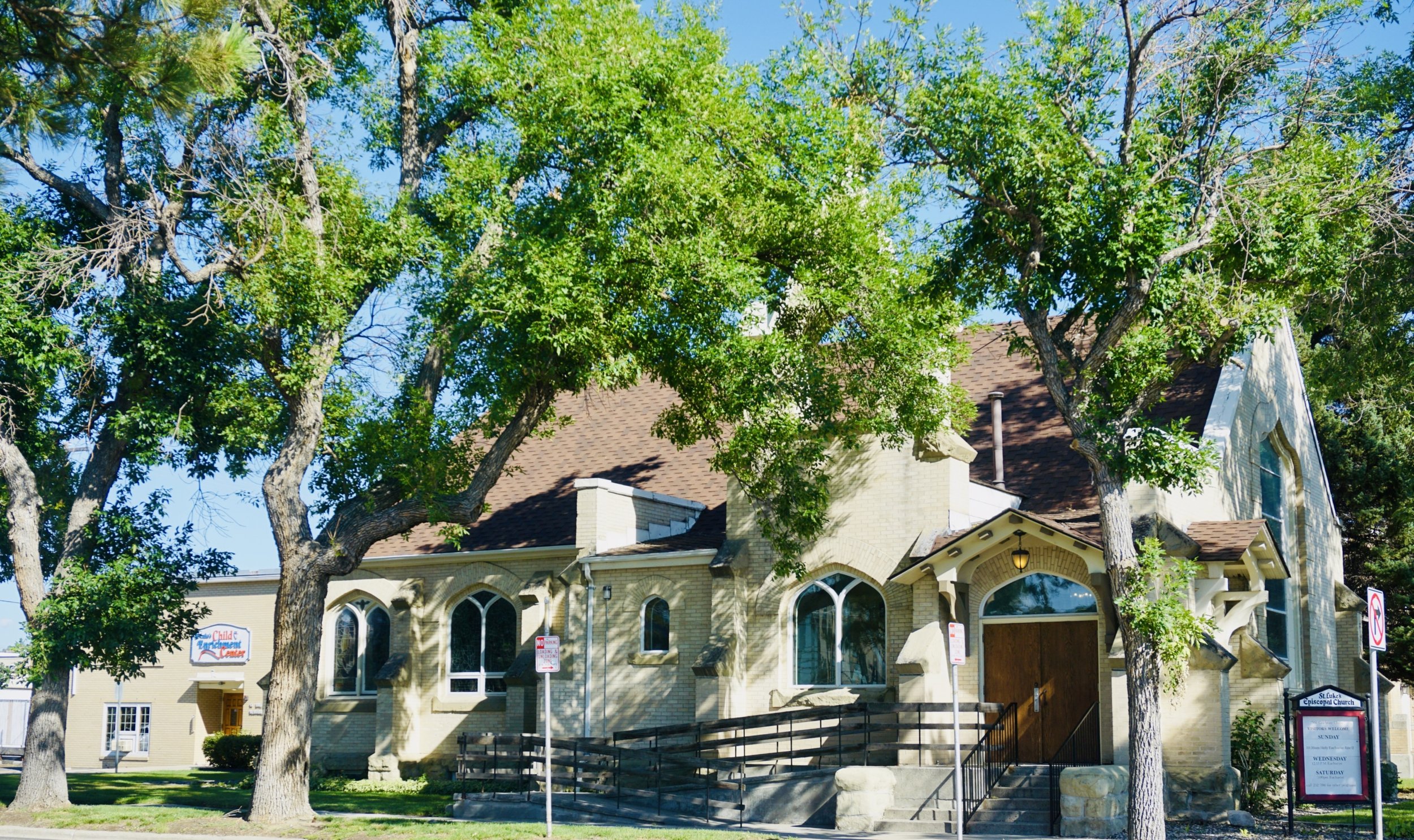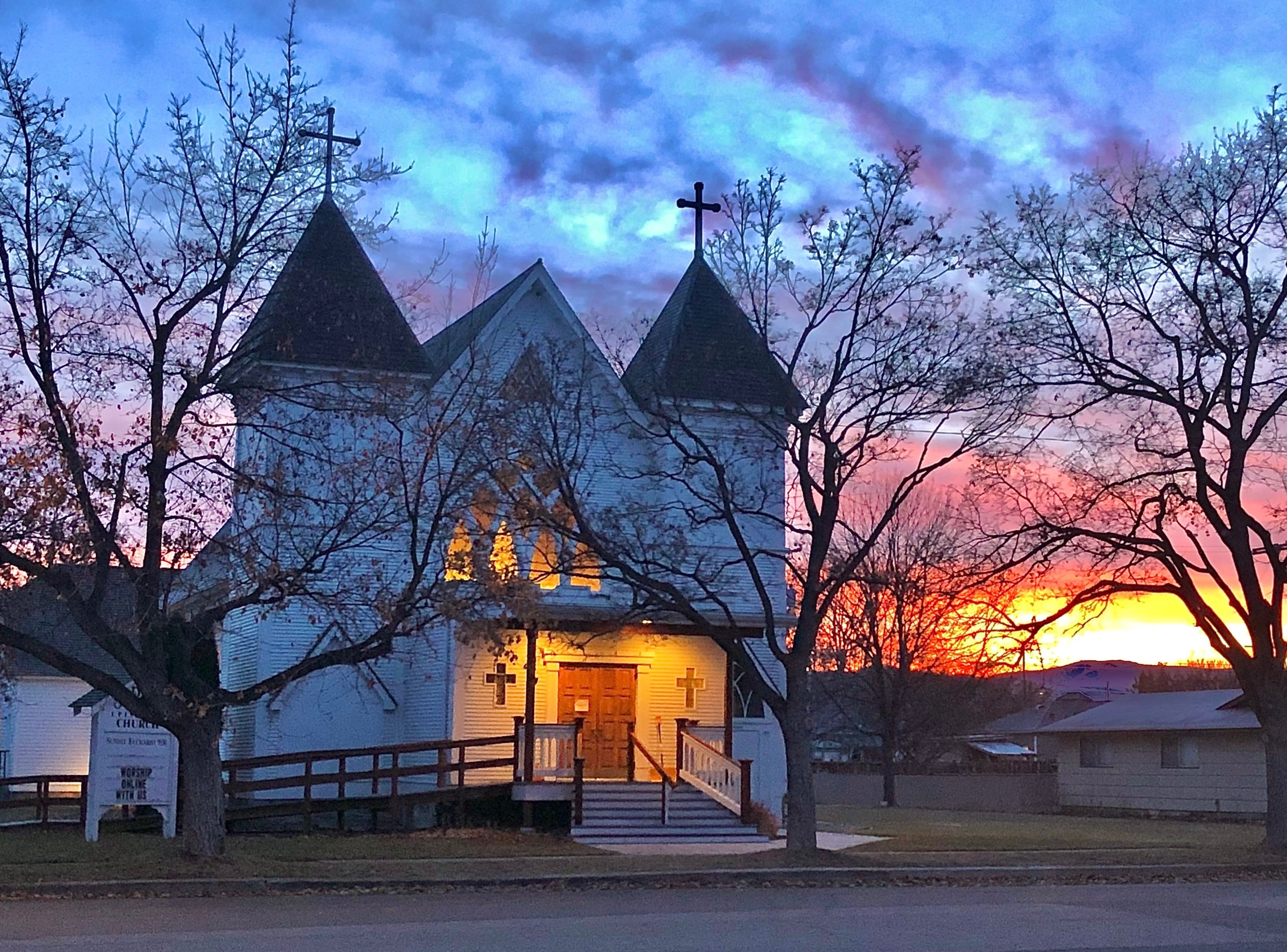
About Us
We gather and live on the Creator’s lands, lands that have been blessed and cared for by the people and ancestors of the Crow (Apsáalooke), Northern Cheyenne (Tsétsêhéstâhese/So’taahe), Confederated Salish & Kootenai (Séliš/Ql̓ispé/Ksanka), Blackfeet (Niitsitapi – Pikuni/Kainai/Siksika), Fort Peck Assiniboine & Sioux (Assiniboine/Nakoda), Fort Belknap Indian Community (Assiniboine – Nakoda/Gros Ventre - Aaniih), Chippewa & Cree, Sioux (Dakota/Lakota), Shoshone-Bannock, Plains Cree, Métis & Little Shell Tribes & Nations.
We recognize and honor the many generations across time immemorial of Indigenous peoples who have lived in holy relationship with these lands, long before many of us, and who continue to live among and alongside us today. We recognize the painful legacy of colonization, displacement, and broken treaties, and we commit ourselves to the ongoing work of truth-telling, healing, and reconciliation.
As members of the Episcopal Diocese of Montana, we acknowledge that this is only a first step. In the spirit of Christ’s call to love, justice, and reconciliation, we commit ourselves to learning, listening, and walking together toward healing and equity for Indigenous peoples, nations, and tribes.
May this acknowledgement be more than words, may it be a living prayer, a shared journey, and a sacred responsibility with Indigenous communities across Montana and beyond.
Written for Montana Synod, edited by Darcie O’Dell, Elder Togendowagan
+ + +
We’re dedicated to helping you achieve our shared mission ─ restoring all people to unity with God and each other in Christ. Please feel free to contact us with your questions, concerns, and needs.
THE EPISCOPAL DIOCESE OF MONTANA
Phone:
(406) 442-2230
Fax: (406) 442-2238
admin@diomontana.com
Mailing Address:
P.O. Box 2020
Helena, Montana 59624
Street Address:
515 N. Park Avenue
Helena, Montana 59601
The Bishop & Staff
-

The Rt. Rev. Marty Stebbins
Bishop of Montana
Toll Free: 1-800-247-1391
-

The Rev. Stephen Day
Interim Diocesan Deployment Officer
-

The Ven. Dorcie Kafka Dvarishkis
Archdeacon
Dorcie grew up on the family homestead in Montana’s Big Sky Country. She now lives in and serves from Missoula, where she was ordained as a deacon in 2016 and installed as Archdeacon in 2020. In addition to being part of her family’s circle of childcare, she is engaged in trauma-informed ministries alongside children, youth, and families at risk, and shepherds the Community of Deacons in the Diocese alongside Bishop Marty Stebbins. Dorcie is also the owner of Giving Well, building on her experiences from more than 35 years of work with nonprofits and faith communities on organizational management, planned giving, and donor relationship opportunities. She and her husband, Mark, have two grown daughters, the wonder of four grandchildren, and a camper ready for the next epic road trip.
-

Rev. Keith Axberg
Chaplain to Retired Clergy
Fr. Keith received his Bachelor’s degree from Washington State University and his M. Div from Vancouver School of Theology. He was made deacon in 1984 and ordained priest in 1985. He has served small and medium-sized parishes over those years, retiring in 2017. He is active in his retirement, assisting in a small parish in the Diocese of Olympia, and now with a new call to serve as Chaplain to Retired Clergy or Clergy Spouses. He and his wife, Barb, have been married 44 years, have two adult children, and two delightful grandchildren
-

Jill Sallin
Canon for Administration
Jill joined the Diocesan staff in 2013. She has lived in Montana her entire life minus 3 days. She has raised two boys and has 3 grandchildren. She enjoys hiking and scrapbooking.
-

The Rev. Sadie Koppelberger
Director of Formation
Fr. Sadie was ordained in 2022 and serves as the rector of Christ Church in Kalispell in addition to her diocesen responsibilities. She grew up in Iowa and holds a BFA from Iowa State University (Go Cyclones!), a Masters in Theology from the University of Glasgow, and an MDiv from Seminary of the Southwest. Fr. Sadie shares a beautiful, chaotic life with her husband, Elliott and their three children who are always adventure ready.
-

James Ljunggren
Camp Marshall Director
After growing up in the Midwest, James made the move to Montana in 2018. He enjoyed a summer at Camp Marshall as the Documentarian/Media Director before joining the staff at Holy Spirit in Missoula in 2020. He joined the Diocesan staff in 2024 and still enjoys writing, photography, video, and spending time in the mountains.
-

Scott Jourdonnais
Canon to the Ordinary
Scott is a native of Great Falls having been baptized and confirmed at Church of Incarnation. He graduated from the University of Montana with a BA and has attended Holy Spirit Parish – Missoula for the past forty-four years. Scott met Mary Beth, his wife of thirty-four years at Camp Marshall, and has three adult children. He served previously as Senior Warden of Holy Spirit, on Diocesan Council and as twice as President of Standing Committee. He and his family enjoy all things outdoors.
LOVING, LIBERATING AND LIVE-GIVING

History & Today
A Very Brief History of the Episcopal Diocese of Montana
The Episcopal Church ventured into The West in 1867 when the Rt. Rev. Daniel S. Tuttle and his assistant, the Rev. E.N. Goddard, arrived in Virginia City, Montana to begin work in the missionary district of Montana, Idaho, and Utah; an area encompassing some 340,00 square miles.
The two largest towns in the Montana Territory were Virginia City and Helena. Bishop Tuttle initially settled in Virginia City, the capital at that time, while Rev. Goddard established a presence in Helena. They held services in any available space – saloons, town halls or stores – with permission of the proprietors. On occasion, they used the church buildings of other denominations.
The work was not easy! Towns built upon the discovery of gold or silver were raucous with hard-working miners who played even harder. Bishop Tuttle lamented the drunkenness, swearing, and irreligious behavior. However, he did find folk who followed the gold rush to establish respectable businesses. This wild place was ripe for planting churches. Funding from individuals and churches back East helped purchase land and buildings.
Bishop Tuttle purchased an unfinished structure from a Methodist minister in Virginia City, which became the first Episcopal Church in Montana – St. Paul’s Mission. He preached the first sermon on May 24, 1868.
Armed with youth, (he was but 30 years old) compassion, and courage, Bishop Tuttle sought to establish congregations in other sizeable communities that sprang up around mineral strikes, river-boat transportation, and trading posts. In 14 years, he opened churches in Helena, Jeffers/Ennis, Bozeman, Missoula, Butte, Deer Lodge, and Fort Benton. In 1880, the missionary territory was divided in two, Montana itself and Utah/Idaho. Bishop Tuttle moved to Utah where he had a home with his wife and children.
The Rt. Rev. Dr. Leigh Brewer was the second Missionary Bishop in Montana, and first Diocesan Bishop. He arrived in February 1881 and continued planting churches.
Bishop Brewer traveled some 4,000 miles in his first year, encouraging congregations to erect buildings and start organized women’s guilds. By October 1881, he pushed the Episcopal Church into Eastern Montana with Emmanuel Church in Miles City. He faced many of the challenges of his predecessor, including difficult travel, bad weather, and the lack of clergy.
His wife, Henrietta, was instrumental in bringing the first trained nurse to Montana. In 1884, the couple led the movement to establish a hospital in Helena. St. Peter’s Hospital, which shares the name of the diocese’ modern-day cathedral, was built in 1887. For years, Henrietta enlisted church guilds to outfit rooms and provide supplies.
By the end of his 36 year term, Bishop Brewer planted 29 congregations.
Maintenance and continued growth fell on the next several episcopates. The Rt. Rev. William F. Faber served from 1916 until his death in 1934. He sponsored three missions (East Helena, Libby, and Hardin) and consecrated many of the earlier missions once they reached parish status.
However, hard times took their toll. Drought, disaster, and played out mines caused shifts in local economics and populations. Missions struggled to survive and more than few closed their doors.
Visit Montana- resources for each region
Montana government site has links to road conditions and park availability and hunting/fishing
A place for journalists to start, but everyone will enjoy this site
Bird Watching, Hunting, Fly fishing:
Hiking/Camping:
Visiting Montana by region:





































